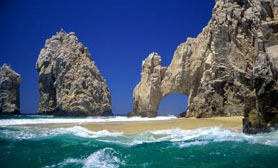People came to the peninsula of Baja California at least 11,000 years ago. Then, only two native groups are thought to have been present on the peninsula. To the south were the Cochimí and, to the north were several tribes belonging to the Yuman language family, including the Kumeyaay, Cocopa, Kiliwa, Paipai and Quechan. The Cochimí whom lived in the peninsula’s Central Desert were predominantly hunter-gatherers who moved frequently; though, the Cochimí on Cedros Island off the west coast had developed an important maritime economy. The Kumeyaay, Kiliwa and Paipai, in the rain sodden northwest were also hunter-gatherers, but that region, due to its climate, supported denser populations and a more sedentary way of life. The peoples of the Cocopa and Quechan of northeastern Baja California preferred agriculture utilizing the floodplain of the lower Colorado River.
In 1539 Europeans reached what is now state of Baja California, Francisco de Ulloa sailed its east coast on the Gulf of California and explored the peninsula’s west coast at as far north as Cedros Islands and possibly further. Then, Hernando de Alarcón revisited to the east coast and the lower Colorado River in 1540, and Juan Rodríguez Cabrillo completed the exploration of the west coast in 1542. Finally, Sebastián Vizcaíno once again surveyed the west coast in 1602.
The state’s economy is bolstered by manufacturing assembly plants, agriculture, mining and tourism. The state is also well known as a tourist destination, thanks to its countless beaches and proximity to the United States. Whether you are visiting Baja California in Mexico for business, pleasure or both, we´re sure that Baja California will meet all of your expectations and that the people of Baja California will make you feel welcome while sampling some of the unique cuisine on offer in the Baja California Restaurant districts.
With six border crossing points into the U.S. state of California, Baja California sees many thousands of crossings each day. In 2012, an estimated 202,000 cars crossed the international border daily.
